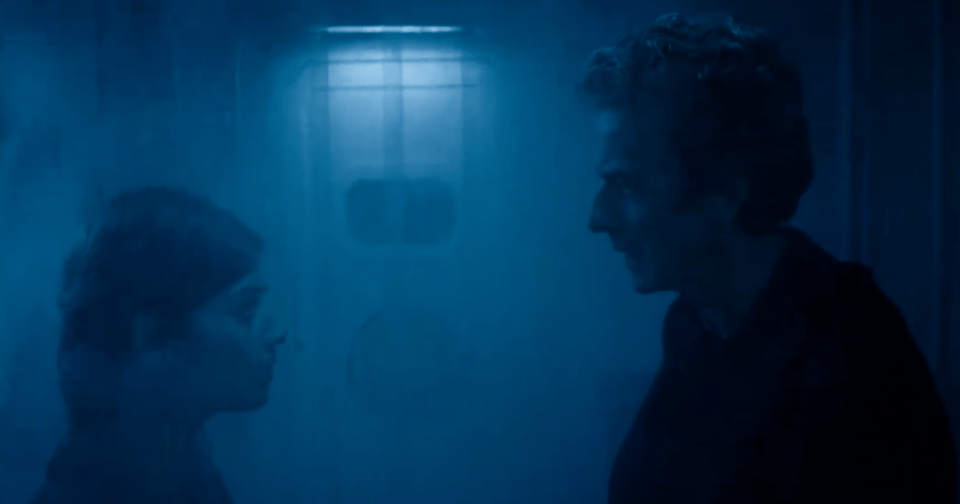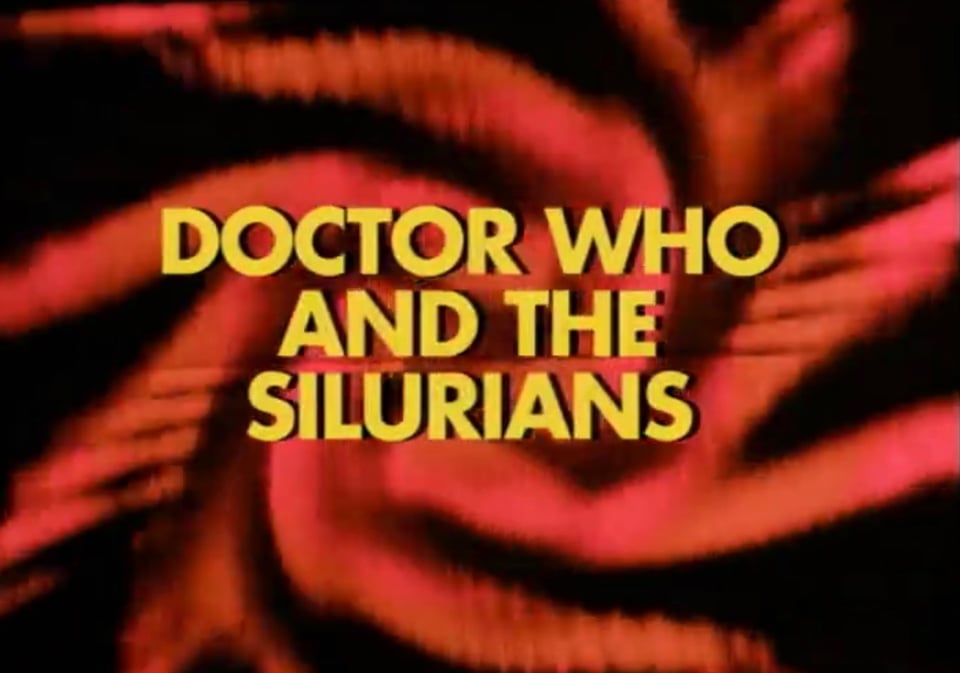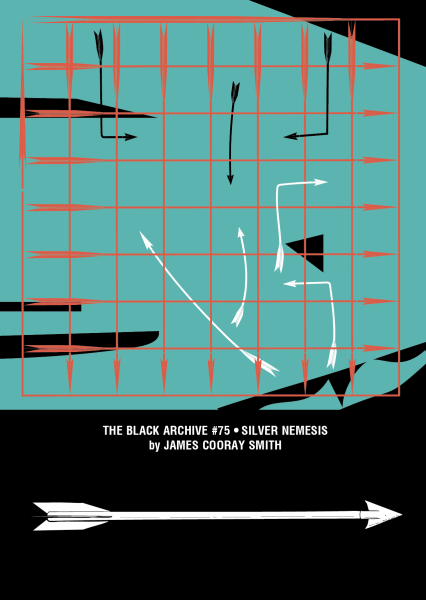"Names that will live forever."
We have a guest post this week, from writer Jonathan Morris, whose diverse credits in many media include Doctor Who audios, books and comic strips - but also things like this adaptation of Charles Dickens’ much neglected and rarely adapted 1844 Christmas novella The Chimes, which I wholeheartedly recommend.
And without further ado…
“They're not aliens. They're Earth-liens. Once known as the Silurian race, or, some would argue, Eocenes, or Homo Reptilia.”
What is the most inaccurately-titled Doctor Who story? A few spring to mind. The Dalek Invasion of Earth doesn’t feature an invasion. Pyramids of Mars is an exaggeration, as there is only one pyramid on Mars. The Invisible Enemy is, sadly, all-too visible. The Caves of Androzani are, we are informed in the first scene, not caves but blowholes. In The Forest Of The Night is set during daylight. But, without doubt, the most inaccurately-titled Doctor Who story has to be Doctor Who and the Silurians. Because his name’s not Doctor Who, and their name isn’t Silurians. And the use of the ‘and the’ formulation was probably a mistake too.
Except, no. It’s a perfectly fine title. There’s plenty of evidence that the lead character’s name is Doctor Who – including a ‘retcon’ in World Enough And Time – and there’s not really any evidence that it isn’t. The ‘and the’ formulation might be annoying but it was frequently used in the ‘Next week’ captions and in the Radio Times to introduce new stories, and would, of course, become a beloved tradition of the Target novelisations. And anyway, you don’t order up seven title captions with the wrong wording by mistake; you may question the reasoning but it was a deliberate decision, there was no moment during the original broadcast when Barry Letts spat out his tea going, “Oh shit, we put the wrong bloody title on!”

Which brings me, circuitously, to the point of this article. The Silurians. Should they really be called that? And what about other monsters? Are some of their names wrong too? According to the Doctor in The Sea Devils, the name ‘Silurians’ is “a complete misnomer. The chap who discovered them must have got the period wrong. No, properly speaking, they should have been called the Eocenes.” Putting aside the fact that the Eocene era is just as, if not more, inappropriate a time period for a species that existed alongside early man, the Doctor is wrong to blame the mistake on the chap who discovered them. In Doctor Who and the Silurians Doctor Quinn made some notes on the Silurian era, but he never refers to the creatures by that name. That honour goes to the Doctor, who starts episode four with the immortal line, “Hello! Are you a Silurian?” So if anyone’s to blame, it’s him – but it’s very in character for him to blame someone else! At least until Sleep No More when he finally admits responsibility for getting it wrong. “I’m the Doctor. I do the naming”.

It is correct to say the Silurians never refer to each other as Silurians during that story, but in their not-much-lauded return appearance in Warriors of the Deep Ichtar introduces himself as the sole survivor of the Silurian triad and then makes more three more references to his people being Silurians.
The reason why this is important is because when my Doctor Who audio Bloodtide came out back in 2001, some critics said that I had got it wrong – or hadn’t done my research – when I had Shevak and Tullok referring to their people as Silurians. These things cut deep. No, of course I wasn’t going to call them “Earth Reptiles” or “Homo Reptilia”, I was going to call them Silurians, because that’s what they were called in bloody Warriors of the Deep. (I later went on to explain their name in The Monster Vault as being the result of a ‘race memory’ i.e. the Silurian era was named after them!). Interestingly, or perhaps not, in the TV series since the writers have still been reluctant to have the Silurians refer to themselves by that name, even though that’s what the Doctor, Strax and Amy call them.
Which brings me neatly to their aquatic cousins, the Sea Devils. I’m sure anyone reading this knows that they are ‘named’ by Clark in Episode Two of The Sea Devils. Clark being played by Star Wars actor Declan Mulholland, for those who care about such things.
The name takes a while to catch on; presumably the Doctor informs Captain Hart that is what they are called between scenes, for him to start using it, but we don’t hear the Doctor use that term until episode four. Again, the Sea Devils don’t refer to each other by that term – in fact, they don’t seem to have any term for their people beyond ‘our people’.
Even in Warriors of the Deep, the Sea Devils never refer to themselves as Sea Devils, although Ichtar and Tarpok use the term, and presumably they are in a position to know. The Sea Devils also never use that term in Legend of the Sea Devils. Maybe we will finally hear them say it in The War Between The Land and the Sea. Or maybe not. But again, given the absence of any alternatives, we can only conclude Sea Devils is their correct name, and Clark using it is another example of a race memory bubbling to the surface.
While we’re on this thread, let’s consider some other monsters. The Daleks helpfully introduce themselves in The Survivors and the Cybermen do likewise in episode two of The Tenth Planet. The naming of Chameleons in The Faceless Ones is rather vague; it goes from Chameleon Tours to their planes being referred to as ‘the Chameleon Plane’ but Chameleon doesn’t refer to an alien species rather than an organisation until the Doctor says “I shall pretend I’m a Chameleon” in episode five (although there is an earlier discussion where he tells Jamie that chameleon is name “that could equally be applied to people...”). But again, they never actually refer to themselves as Chameleons, so maybe having a species name is another part of their individuality they are missing.
The Ice Warriors are another obvious example. Named by a minor character in their first story, they’re not even referred to as Ice Warriors by the Doctor or his companions until episode three of their return appearance in The Seeds of Death. And it’s not until part five of The Monster of Peladon where an actual Ice Warrior uses the term. And the term ‘Ice Lord’? Never used in television Doctor Who. As far as I can tell, it’s something the fans made up and used in spin-off fiction. Yes, including my own story Deimos/The Resurrection of Mars. (By way of redress, I also came up with a very silly rationale for the name ‘Ice Warrior’ for The Monster Vault, still available from all good booksellers and Amazon.)
It is always interesting where there are monsters which never get named during the story. Primords. Gel Guards. The Reapers. The Time Beetle. The Flood. Time Zombies. The Mantraps. The big fish in Thin Ice. Just as nature abhors a vacuum, Doctor Who monster books require monsters to have names, even if it’s just a description like ‘the Midnight Monster’. (I decided not to include it in The Monster Vault, due to lack of illustrative material, and decided to call the big fish in Thin Ice an Ice Lophius which has, sadly, failed to catch on.)
And there are a few near-misses, like Bok (only named twice), Ogrons (only named three times in Day of the Daleks) and Polyphase Avatron and the Pipe People (both only named once!). You can imagine the relief of monster-book-authors when the Doctor finally came up with a name for the monsters in Flatline.
But this article was ostensibly about Season 7. The season where the monsters are named by the Doctor – Silurians – or only referred to by their occupation – Ambassadors – or not named at all – Primords. And then there are the Autons. Where did their name come from? When Ransome returns to the factory after visiting the United States, he notices that it has undergone a radical change of personnel and output. But he doesn’t mention that it’s name has changed, so presumably it was called Auto Plastics before the Nestene Consciousness took over. Which suggests, of course, that either the Autons were named after the factory, or the Nestene Consciousness chose the factory because it had a similar name to its own foot soldiers.
Autons are, as we know, just the rudimentary, remote-controlled, shop window dummy soldiers, and not the more sophisticated duplicates, although that distinction admittedly gets lost about midway through Terror of the Autons when the Autons start to become rather chatty. That said, the new series has been fairly good on marking the difference – the word ‘Auton’ is never uttered in Rose or The Pandorica Opens/The Big Bang and it’s only Under the Lake and Praxeus that refer to Autons as if they are duplicates or a form of plastic-based life.
So, yes, that’s how it works. I go to all this trouble to explain that Doctor Who and the Silurians isn’t a mistake, and then I find two more.
Nobody’s perfect!

Hello!
No, you haven’t escaped me entirely this week. I have a new book out, and as luck would have it, it’s about Doctor Who too. It’s the 75th volume in the Black Archive series, in which writers take a single Doctor Who story from somewhere between 1963 and now and write a full on tens of thousands of words monograph about them. My new one is about Silver Nemesis, the 25h anniversary story and can be purchased for kindle, in paperback or both here. It doesn’t contain the article about the story linked to just above, but that should at least give you an idea of my attitude to the serial.

